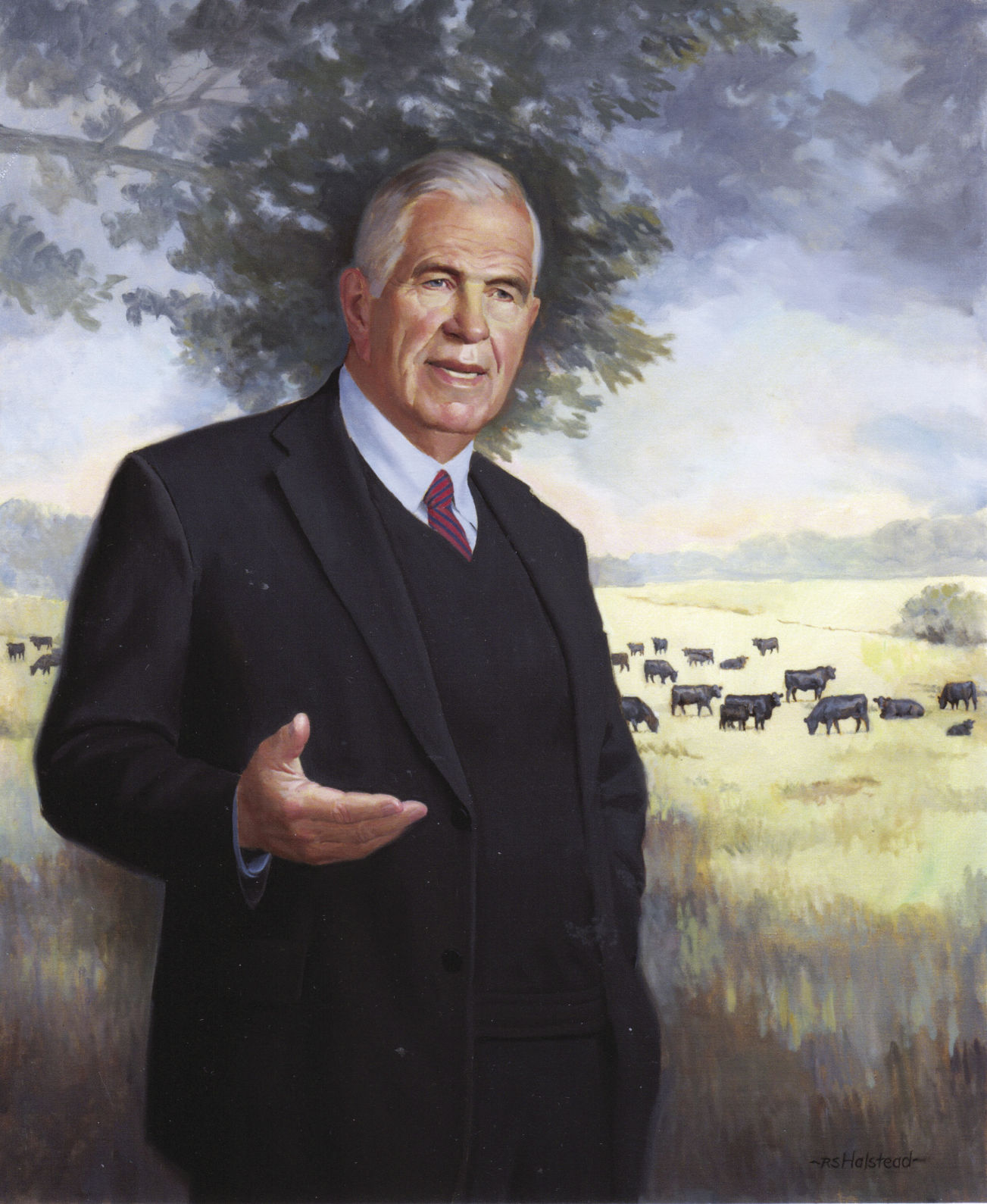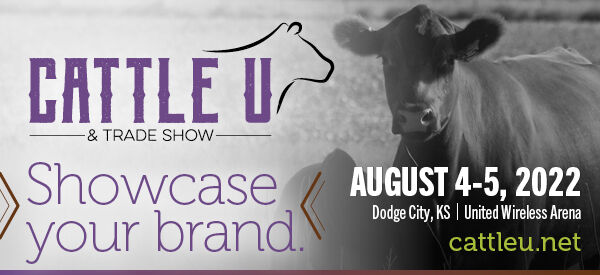Tom Burke is one of the most knowledgeable experts about Angus industry and he also enjoys promoting the breed.
In 2018, Burke he had 441 flights, traveled 341 nights and was involved in 170 Angus sales. “I’m an Angus guy,” he quipped as he talked about his commitment to serving the industry.
The breed lends itself to being accepted in the market place by bull buyers.
“They are a cattleman’s breed that are basically trouble free,” he said. “The breed milks well, offers calving ease, has fleshing ability and they have sale ability.”
The Angus brand starts with bulls, heifers and calves and finishes at the grocery store and restaurants. In his travels, Burke noticed that when people hear the term Certified Angus Beef it perks them up because in the marketplace it has become the beef of choice.
“Whether sold as feeder calves or a finished product in a Kansas feedlot they have more value because people know naturally the meat is going to be tasty,” Burke said. “Angus is the taste of choice.”
19th century introduction
The first four Angus bulls that came to America in 1873 because of George Grant who brought them to Victoria, Kansas. The Angus bulls were bred to longhorn females. The following year the calves were polled and they were black in color, Burke said. The next year they fed them on lush grass and shipped them to Kansas City, Missouri, where they topped the market, he said.
In the late 1800s and early 1900s the stronghold of Angus cattle was basically in the Corn Belt.
“They fed out extremely well and it was a good way for farmers to market their corn,” he said “There were tons of farmer-feeders and that’s what really got the breed going.”
The first Angus cattle were registered in the United States in 1883 but it was not until 1947 the first million was registered. Today about 1 million head are registered every three years.
Active Angus breeders
There are about 25,000 active Angus breeders in the U.S., Burke said, and in his overseas travels he notes there are Angus cattle found on every continent.
“The best Angus cattle and the best Angus breeders are in the United States of America,” Burke said. “Every continent you go to whether it is in Canada, Scotland, Ireland, South Africa, South America, New Mexico, New Zealand or Australia, there are all from 50 to 80 percent U.S. bred Angus cattle. We are the only Angus breed registry in the world that only has Aberdeen black Angus. The rest have dual registry of red and black.”
Today the Angus stock produces about 1.12 billion pounds of beef around the world, he said.
“All this is being done by Angus bulls,” he said. “That is what has made the Angus bull market so strong.”
In Burke’s opinion the backbone of the industry remains with the eye of the individual “old-time stockman.” While Burke appreciates the efforts of “science-breeding” he endorses the human element, too.
“It is still going to take the eye of the masters to produce the kind of product that is trouble free like we have. The science has been a real challenge to the Angus breed from the standpoint of phenotypes. They can have tremendous numbers and expected progeny differences but you still have to have the working mechanisms of a seedstock animal that is something that does not come into play with genomics.
Sign up for HPJ Insights
Our weekly newsletter delivers the latest news straight to your inbox including breaking news, our exclusive columns and much more.
“It is a tool but we have to be careful so we don’t take it too far. A lot of people may think we have not taken it far enough. We have to use it but we have to use it carefully.”
Burke, now 75, resides on a farm in Platte City, Missouri, and is an owner and registered Angus cattle sales manager and Angus breeder. Burke’s sale management firm, the American Angus Hall of Fame, Smithville, Missouri, manages purebred Angus cattle auctions. In the 140-year history of the Angus breed, the American Angus Hall of Fame has managed more “million dollar plus” Angus sales than all competitors combined.
The hall of fame provides support to the industry and besides Burke it includes staff members Kurt Schaff and Jeremy Haag. Their duties include helping Angus producers to organize and promote their sales.
“When we manage the sale we visit the herd and help them with catalogs and help them advertise,” Burke said. “We get there early to help.”
Early roots
Burke got an early indoctrination as observer from the ranch to the plate. He was born on a family farm and Angus ranch in Minnesota, and became a member of the American Angus Association in 1955. A charter member of the Minnesota Junior Angus Association, he was elected the first president of the organization in 1960.
The passion of youth organization members have helped him to become more enthused about future Angus operations.
In the 1970s, he noticed there very few young people who wanted to take over the farms and ranches. Today he sees more young people who have not only been guided but they are enthusiastic about becoming farmers and ranchers in an ongoing family operation.
The junior association provides diverse ways for youth to learn about cattle and related industries and that helps them with future educational opportunities, Burke said.
Burke’s promotion of the breed has garnered him one of the top awards in agriculture. In November 2017, Burke was inducted into the prestigious Saddle and Sirloin Portrait Gallery in Louisville, Kentucky.
Burke also encourages livestock producers to visit the American Angus Hall of Fame that celebrates the Angus breed. It includes more than 100,000 items about the Angus breed. More information is available at www.angushall.com.
Dave Bergmeier can be reached at 620-227-1822 or [email protected].



